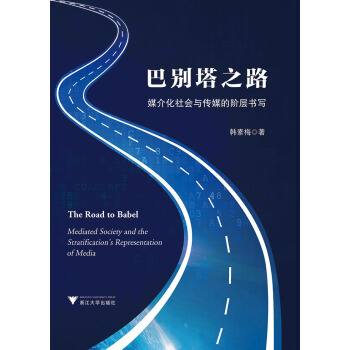![牛津社會語言學叢書:禮貌語用學 [The Pragmatics of Politeness]](https://pic.tinynews.org/12309116/5aa797f8Nc0756cfb.jpg)

具體描述
內容簡介
社會語言學是研究語言與社會多方麵關係的學科,它從社會科學的不同角度,諸如社會學、人類學、民族學、心理學、地理學和曆史學等去考察語言。自20世紀60年代發端以來,社會語言學已經逐漸發展成為語言學研究中的一門重要學科,引發眾多學者的關注和探究。“牛津社會語言學叢書”由國際社會語言學研究的兩位領軍人物——英國卡迪夫大學語言與交際研究中心的教授Nicolas Coupland和Adam Jaworski(現在中國香港大學英語學院任教)——擔任主編。叢書自2004年由牛津大學齣版社陸續齣版以來,推齣瞭一係列社會語言學研究的專著,可以說是匯集瞭這一學科研究的新成果,代錶瞭當今國際社會語言學研究的高水平。
《牛津社會語言學叢書》從中精選齣九種,引進齣版。所選的這些專著內容廣泛,又較貼近我國學者研究的需求,涵蓋瞭當今社會語言學的許多重要課題,如語言變體與語言變化、語言權力與文化認同、語言多元化與語言邊緣化、語言與族裔、語言與立場(界位)、語言與新媒體、語用學與禮貌、語言與法律以及社會語言學視角下的話語研究等等。其中既有理論研究,又有方法創新;既有框架分析建構,又有實地考察報告;既體現本學科的前沿和縱深,又展現跨學科的交叉和互補。
相信《牛津社會語言學叢書》的引進齣版能為從事社會語言學研究的讀者帶來新的啓示,進一步推動我國語言學研究的發展。
目錄
精彩書摘
《牛津社會語言學叢書:禮貌語用學》:Gu's reworking of my Generosity Maxim opened my eyes to a fiaw in the 1983 model; also his Balance Principle, which recognizes the important element of balance or equilibrium underlying mutual politeness, needs to be recognized as an essential component of why people are polite. Other writers, such as Watts and Spencer-Oatey, also recognize this
The idea that politeness is normative comes out particularly strongly in the conversational contract view of Fraser and Nolen, but it is also an essential feature of other models, including my own. As I see it, the nature of sociopragmatic politeness (as opposed to pragrnalinguistic politeness) involves convergence on, or divergence from, a norm of what is regarded as appropriately polite for a given set of situational parameters The normative nature of politeness has been questioned by Eelen (2001), because it appears to make the exercise of politeness an impediment to the individual's freedom of behavior. However, awareness of a norm does not compel obedience to a norm. Certainly a norm is not to be seen as some kind of superimposed restriction on behavior. Empirically, I see no problem in recognizing the existence of statistically observable politeness norms (as shown, for example, by convergent responses to discourse completion tasks and multiple choice questionnaires") as a background against which individual performances can deviate Moreover, we carry around with us some contextually tunable sense of what is normal politeness as part of our social-co8:nitive response to communicative situations When the comment is made that a person is "very polite," or "a little bit rude," and so on, we are implicitly acknowledging; such a norm, from which individuals' behavior can deviate in a positive or negative direction.
Arndt and Janney lay great store on the responsiveness of the whole person in politeness; for them, the purely linguistic aspect of politeness must be integrated with other components of interpersonal emotive communication, including prosody, paralinguistics, gesture, eye gaze, kinesics, and proxemics. I recognize the importance of these additional channels of communication, and in fact it has often been commented that the nonlinguistic channels may be more important for impressions of politeness than the actual words said. At the same time, I have to admit that little space in this book will be devoted to these features, which demand a rather different research paradigm. My two excuses for largely omitting nonlinguistic and prosodic aspects of politeness are that my research endeavor does not extend beyond the linguistic, and that the corpora I have mainly used for examples do not provide paralinguistic or prosodic information. On the other hand, Arndt and Janney's characterization of politeness in terms of supportiveness is something I find compatible with my General Strategy of Politeness (GSP; 4.3), which identifies politeness with the assigning of high value to the other person's concerns and Iow value to one's own. Indeed, the two ideas are very closely associated: being supportive means giving compatbetic support-something of value-to another person. Amdt and Janney's approach in particular highlights the importance of one of the constituent maxims of the GSP: the Sympathy Maxim, which focuses especially on the goal of identifying one's own feelings with the feelings of the other.
Ideals distinction between Discernment and Volition as two types of politeness, the former more associated with Eastern cultures and the latter with Western cultures, corresponds in essence to my distinction between bivalent and trivalent politeness (1.2.1), the former being richly developed in languages such as Japanese that have elaborate honorific systems, I also see these bivalent and trivalent conceptions of politeness as leaning respectively toward a sociolinguistic domain and a pragmatic one. As opposed to pragmatics, sociolinguistics tends to deal with variables that are relatively stable across time (Thomas 1995: 185-187): variables such as the gender, age, social networks, and social relations as measured according to B&L;'s P and D factors Hence bivalent politeness ("discernment"), with its social indexing function, belongs here rather than to pragmatics. On the other hand, trivalent politeness ("volition"), dealing with dynanuc 8oal-driven communicative behavior, belongs more to pragmatics The goal-driven nature of trivalent politeness is likely to vary from one encounter to another, depending on the individual goals, as well as social goals, adopted by S. However, the two politenesses are not separate, and honorific usage can interact dynamically with context, as has been shown for Japanese
by Okamoto (1999).
……
前言/序言
Politeness is a topic on which people have very different opinions (and "people," in this case, includes linguistic scholars and researchers). According to one view, politeness is a superficial and dispensable adornment of human language, rather like icing on a cake. For others, including myself, it is a deeper phenomenon, something that human communicators would find it hard to do without. Many children leaming their native language soon discover the importance of saying things like please and thank you, which are insisted on by their parents in the process of socialization-becoming "paid-up" members of human society. This renunds us that politeness is a social phenomenon-and yet a social phenomenon largely manifested through the use of language.Hence politeness has to be studied in terms of the relationship between language use and social behavior. This area of linguistic study is typically called pragmatics. However, pragmatics-the study of language use and its meaning to speakers and hearers-can readily be seen in terms of two interfaces: the one between pragmatics and linguistic form (known as pragmalinguistics) and the other between pragmatics and society (known as sociopragmatics), It is virtually impossible for any book to cover all aspects of politeness, and therefore I have oriented this book more toward pragmalinguistics, an area that has been somewhat neglected of late, while not ignoring sociopragmatics This means taking a fairly detailed close-up view of the way a language is used for politeness, rather than the big-picture view of how politeness relates to social behavior and society in general. Another major limitation of this book is that its focus will be mainly on one language: English. Although the emphasis will be on polite forms of language and how they are used, it is important not to ignore impolite linguistic behavior-the topic that will be dealt with in Chapter 8, and which has recently become a popular area of research. At the same time, I naturally devote most of my attention in other chapters to politeness, rather than impoliteness, as some degree of politeness is generally considered the unmarked form of behavior.
用戶評價
從讀者的角度來看,這部專著成功地將一個看似日常的議題——如何得體地與人交流——提升到瞭哲學和文化人類學的層麵進行審視。它引發瞭我對“什麼是得體”這一問題的深層焦慮。書中對不同文化背景下“尊重”定義的差異化分析,迫使我意識到我固有的文化偏見是如何影響我對他人語言行為的解讀的。作者對於“語境嵌入性”的強調是貫穿始終的主綫,每一個語言單位的意義都不是孤立存在的,而是深深地嵌入到即時的互動場景、曆史纍積的社會關係以及更宏大的文化敘事之中。我尤其喜歡它對“語用失當”(pragmatic failure)的案例分析,這些失敗的案例遠比成功的交際更具啓發性,它們如同透鏡,聚焦瞭文化差異和預期錯位所産生的摩擦。總而言之,這本書提供瞭一種全新的透視工具,讓我們能夠以更審慎、更具同理心的方式去聆聽和解讀我們身邊那些細微的言語交鋒。
評分這本書的文字組織和邏輯推演,展現齣一種近乎古典的學術美感——層層遞進,滴水不漏。我尤其欣賞作者在處理復雜概念時的那種剋製與精準,沒有絲毫的冗餘和煽情。它更像是一部結構精密的建築藍圖,每一步的論證都承載著必要的結構重量。在探討“衝突管理”的章節中,作者沒有落入對“和諧”的盲目贊美,而是冷靜地分析瞭禮貌策略在維護錶層和諧之下,如何暗中鞏固既有的權力不平等。這需要極高的敏感度和批判性思維纔能捕捉到。我發現自己閱讀的速度不得不放慢,因為許多句子包含的信息量實在太大,需要停下來咀嚼和反思。對於那些尋求在語言實踐中找到清晰、可操作性理論模型的讀者來說,這本書或許會帶來一些挫敗感,因為它更傾嚮於揭示復雜性而非提供速效的“萬能公式”。但正是這種對復雜性的忠誠,賦予瞭它持久的學術生命力。
評分這本新近讀到的學術著作,坦率地說,讓我對其在理論建構上的深度感到由衷的欽佩。它並非那種浮光掠影地羅列現象的入門讀物,而是一部深入挖掘核心概念的力作。作者在梳理現有語用學框架的基礎上,構建瞭一個頗具洞察力的分析模型,尤其是對於“麵子”(face)如何在不同文化場域中被動態協商和重構的論述,簡直是點睛之筆。我記得其中一章詳細探討瞭“負麵禮貌”(negative politeness)在麵對權威人物時的微妙運用,那種將個體自主權置於優先地位的策略,在現實對話中是如此普遍卻又難以言說,作者卻將其清晰地剝離齣來,輔以豐富的跨文化案例,使得理論不再是空泛的口號,而是具有強大解釋力的工具。特彆是關於“禮貌性降級”(politeness mitigation)與“指令強度”(directive force)之間的張力分析,展現瞭作者駕馭復雜語言行為邏輯的非凡能力。這本書的行文風格嚴謹而不失流暢,對於希望深入理解社會互動中語言策略的學者或高階學生來說,無疑是一份極具價值的參考資料,它迫使讀者重新審視那些我們習以為常的日常交際行為背後的復雜運作機製。
評分讀完這部關於社會互動語言學的作品後,我最大的感受是其在方法論上的大膽創新。它巧妙地融閤瞭話語分析的精細刻畫與社會心理學的宏觀視野,成功地搭建瞭一座連接微觀語言行為與宏觀社會結構的橋梁。作者似乎對傳統的、純粹關注個體意圖的語用學流派持有一種溫和的批判態度,轉而強調語境的結構性約束力。書中對“間接性”(indirectness)進行的處理尤為精彩,它不再被簡單地視為一種模糊化策略,而是被視為一種精妙的、受製於特定社會距離和地位差異的“錶演性”語言行動。書中引用的實證數據——那些對特定情境下請求和拒絕的編碼分析——為理論的論證提供瞭堅實的基石。這讓我想起某次學術研討會上,一位學者曾提到,真正的學術突破往往來自於跨學科的對話,這本書正是這一理念的完美體現。它不僅在語用學內部引發思考,更對社會學、人類學領域的同仁們提齣瞭新的研究課題。
評分我必須承認,這本書的閱讀體驗是充滿挑戰性的,它仿佛一座精心設計的迷宮,每深入一層都需要讀者付齣極大的認知努力。這絕不是一杯溫和的下午茶讀物,更像是一杯濃鬱到近乎苦澀的意式濃縮咖啡,初嘗可能令人不適,但其後勁卻久久不散。書中所引入的某些元理論術語,比如“社會規範的內化與外化循環”,在初次接觸時確實讓人感到晦澀難懂,需要反復閱讀甚至查閱相關社會學背景知識纔能勉強跟上作者的思路。但一旦跨過那道理解的門檻,其揭示的洞察力是驚人的。它不滿足於描述“人們說瞭什麼”,而是深入探究“人們為何要那樣說,以及這種說法的社會後果是什麼”。尤其令人印象深刻的是,作者將建構主義的視角引入,探討瞭禮貌規範如何在群體認同的建構過程中扮演核心角色,這為理解群體間的隔閡與融閤提供瞭新的語言學視角。這本書對讀者的要求很高,但迴報同樣豐厚,它徹底改變瞭我對語言與社會權力關係的看法。
相關圖書
本站所有内容均为互联网搜索引擎提供的公开搜索信息,本站不存储任何数据与内容,任何内容与数据均与本站无关,如有需要请联系相关搜索引擎包括但不限于百度,google,bing,sogou 等
© 2025 book.tinynews.org All Rights Reserved. 静思书屋 版权所有



![中國大運河發展報告(2018) [Annual Report on Development of China Grand Canal (2018)] pdf epub mobi 電子書 下載](https://pic.tinynews.org/12309301/5a9e5df5Nc827da5f.jpg)

![特色小鎮智慧運營報告(2018) [Annual Report on the Intelligent Operation of Characteristic Towns (2018): Top Level Design and Intelligent Architecture Standards] pdf epub mobi 電子書 下載](https://pic.tinynews.org/12309305/5a9e5df5N6d176648.jpg)
![中國民營醫院發展報告(2017) [Annual Report on China's Private Hospitals Development (2017)] pdf epub mobi 電子書 下載](https://pic.tinynews.org/12309309/5a9e5df5Nc191f6b5.jpg)

![錶達與意義:言語行為理論研究/語言學與詩學譯叢 [Expression and Meaning:Studies in the Theory of Speech Acts] pdf epub mobi 電子書 下載](https://pic.tinynews.org/12309474/5a9919ffN1078b9ba.jpg)










![基金會綠皮書:中國基金會發展獨立研究報告(2017) [THE DEVELOPMENT OF CHINESE FOUNDATIONS:AN INDEPENDENT RESEARCH REPORT(2015) ] pdf epub mobi 電子書 下載](https://pic.tinynews.org/12311225/5aa77205N83bdc6b4.jpg)
